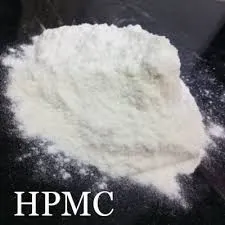
Nov . 04, 2024 12:25 Back to list
Hydroxypropyl Methyl Cellulose Uses and Benefits in Dietary Supplements
Hydroxypropyl Methylcellulose in Supplements A Comprehensive Overview
In the realm of dietary supplements, it is essential to understand the various ingredients that contribute to their formulation, both for enhancing effectiveness and ensuring safety. One such ingredient that has garnered attention is Hydroxypropyl Methylcellulose (HPMC). This article explores the properties, applications, and implications of HPMC in supplements, shedding light on why it is increasingly popular.
What is Hydroxypropyl Methylcellulose?
Hydroxypropyl Methylcellulose is a semi-synthetic polymer derived from cellulose, a natural component of plant cell walls. It is created through a chemical modification process that introduces hydroxypropyl and methyl groups to cellulose, enhancing its solubility in water and altering its physical properties. HPMC is known for being a non-ionic, biodegradable compound, making it an attractive ingredient for various applications.
Functions and Benefits of HPMC in Supplements
1. Binders and Excipients HPMC is widely utilized as a binder in tablet formulations. It helps ingredients adhere to one another, ensuring the integrity of the tablet and facilitating the manufacturing process. Its adhesive properties are particularly useful for producing tablets that have a consistent quality and appearance.
2. Film Coating The film-forming capabilities of HPMC make it a popular choice for coating tablets and capsules. This function not only protects the active ingredients from environmental factors (such as moisture and light) but also enhances the product's taste and appearance. Film-coated supplements tend to have a smoother surface, making them easier to swallow.
3. Controlled Release HPMC is also used in formulations designed for controlled or sustained release of active ingredients. By manipulating the molecular weight and viscosity of HPMC, manufacturers can develop delivery systems that release nutrients over an extended period, improving the bioavailability of the supplement.
4. Thickening Agent Its thickening properties allow HPMC to be used in liquid supplements, providing a desirable texture and mouthfeel. This is particularly beneficial for creating gels or emulsions, enhancing the overall product experience.
hydroxypropyl methyl cellulose in supplements

5. Dietary Fiber Source HPMC is considered a soluble fiber, contributing to the dietary fiber content of supplements. This can be advantageous for digestive health, as it may help regulate bowel movements and improve gut function.
Safety and Regulatory Considerations
Hydroxypropyl Methylcellulose is generally recognized as safe (GRAS) by the U.S. Food and Drug Administration (FDA). Its compatibility with human health has been affirmed through numerous studies, which have found no significant adverse effects when consumed within recommended limits. Nevertheless, as with any supplement ingredient, individuals with specific allergies or sensitivities should consult with healthcare professionals before consumption.
Popularity in the Supplement Industry
The growing trend toward clean label products in the supplement industry has led to an increase in the use of HPMC. Consumers are increasingly demanding transparency regarding ingredient sourcing and formulation practices. As a plant-based polymer, HPMC aligns well with these demands, appealing to vegans, vegetarians, and those constituents who prefer natural ingredients.
Moreover, as health and wellness trends continue to rise, the addition of HPMC to supplements responds to consumer desires for products that not only provide health benefits but also ethical and environmental considerations.
Conclusion
Hydroxypropyl Methylcellulose has become an invaluable ingredient in the dietary supplement industry, known for its multifunctionality and numerous benefits. From serving as a binder and film-former to functioning as a thickening agent and dietary fiber source, HPMC's versatility is impressive. As consumers continue to seek high-quality, safe, and effective supplements, the role of HPMC is likely to expand further, solidifying its place in the market. Whether one is a manufacturer or a consumer, understanding the implications of HPMC enhances the knowledge of supplement formulation and empowers informed choices in health and wellness products.
-
Versatile Hpmc Uses in Different Industries
NewsJun.19,2025
-
Redispersible Powder's Role in Enhancing Durability of Construction Products
NewsJun.19,2025
-
Hydroxyethyl Cellulose Applications Driving Green Industrial Processes
NewsJun.19,2025
-
Exploring Different Redispersible Polymer Powder
NewsJun.19,2025
-
Choosing the Right Mortar Bonding Agent
NewsJun.19,2025
-
Applications and Significance of China Hpmc in Modern Industries
NewsJun.19,2025







